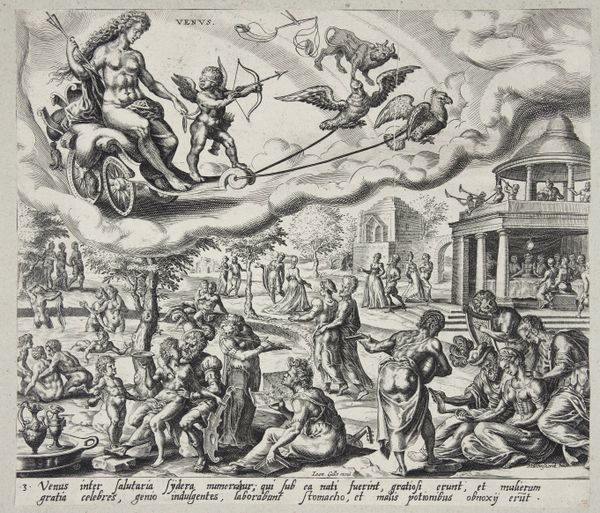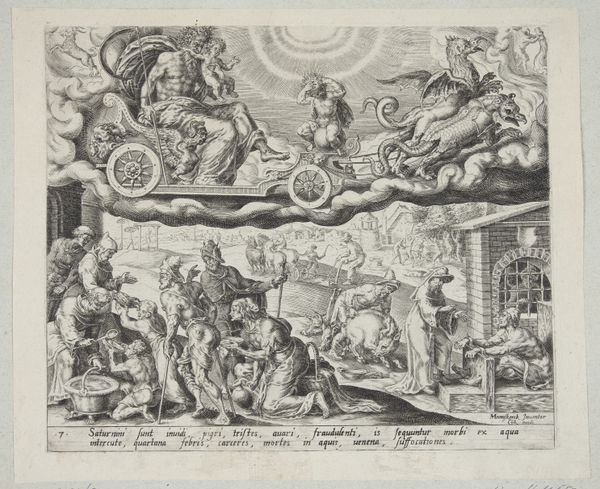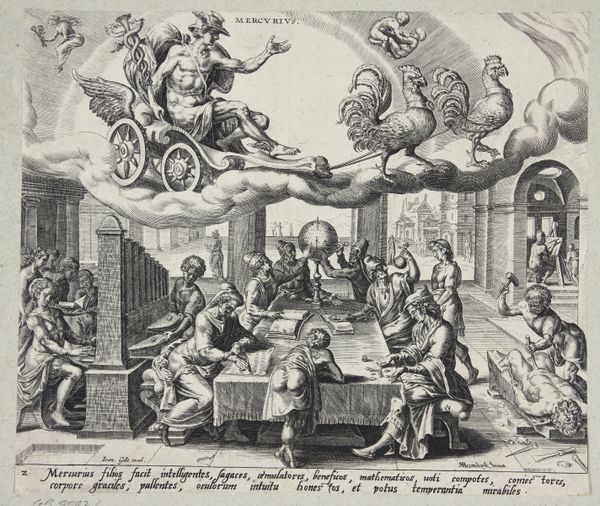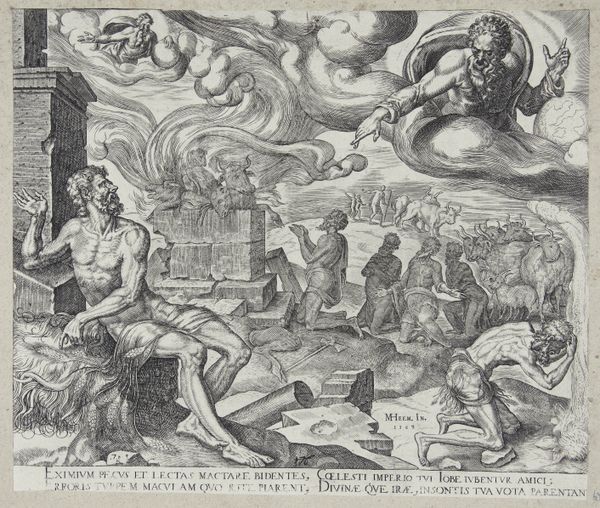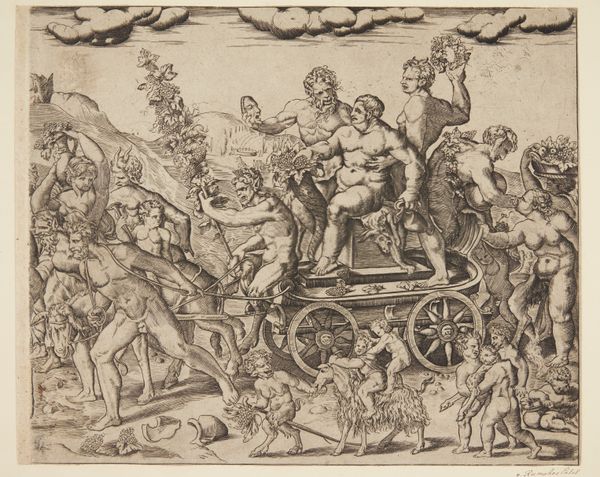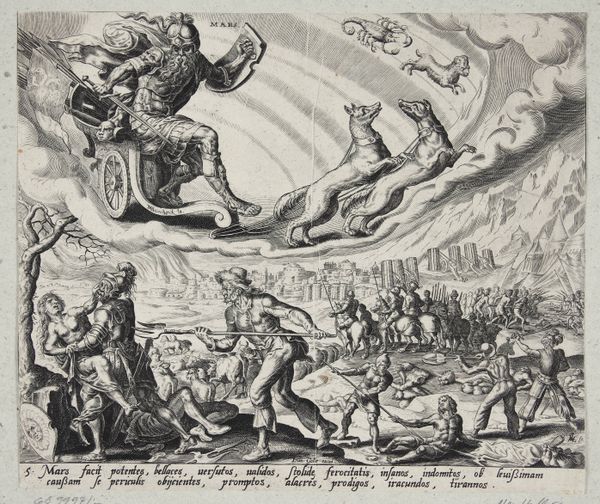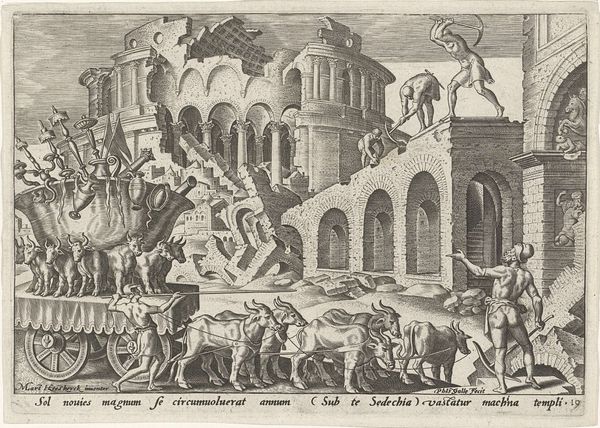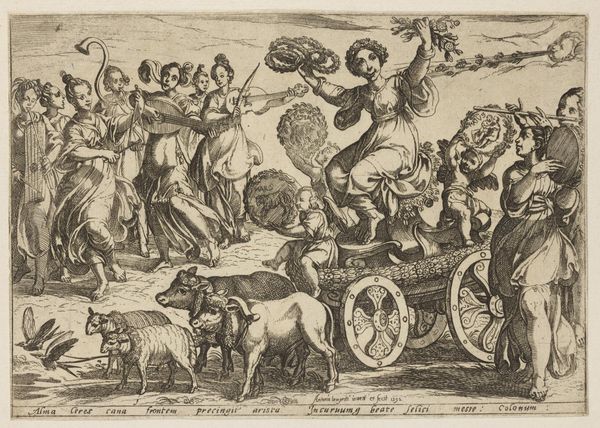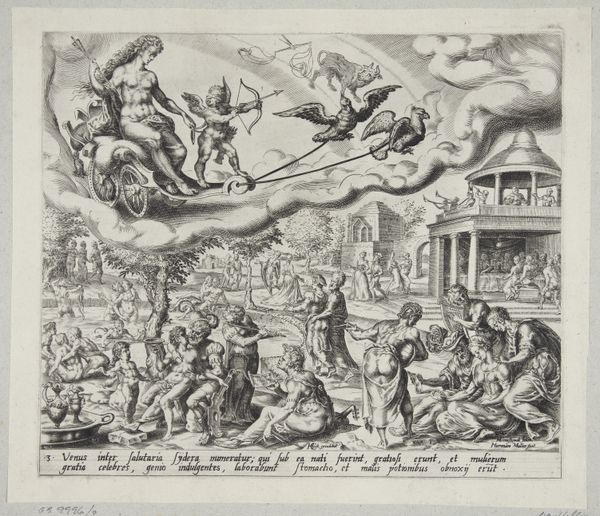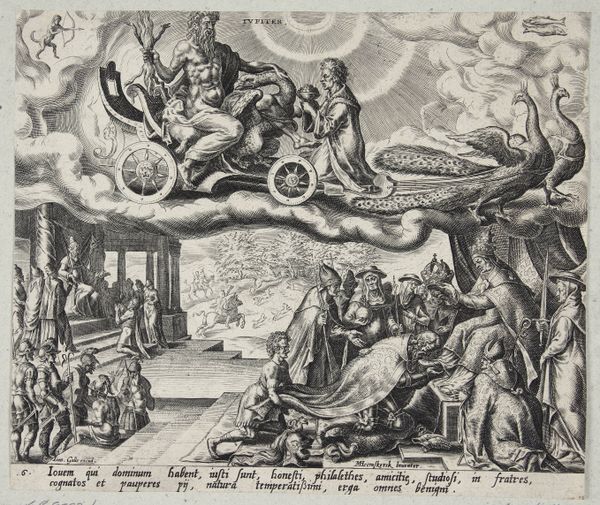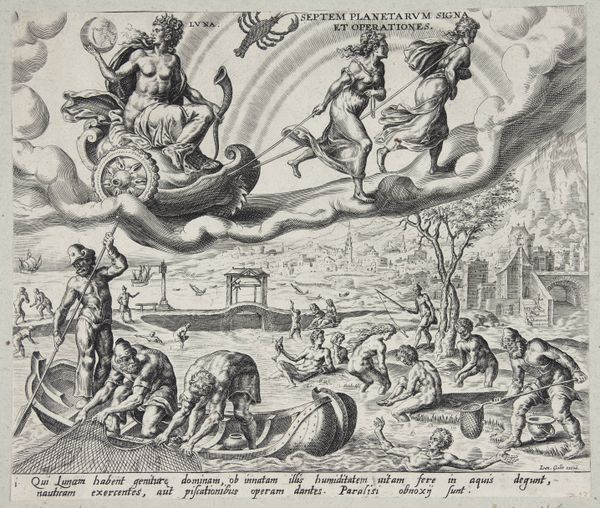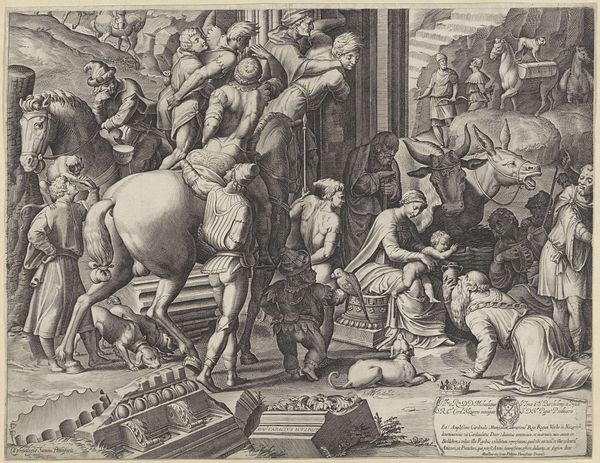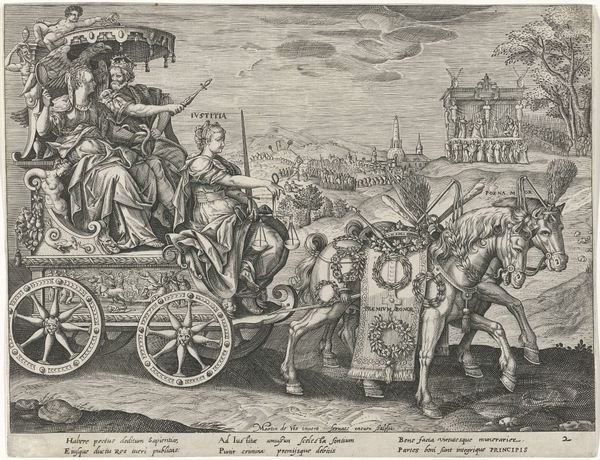
print, ink, engraving
#
ink drawing
#
allegory
#
narrative-art
# print
#
mannerism
#
figuration
#
11_renaissance
#
ink
#
history-painting
#
engraving
Dimensions: 208 mm (height) x 246 mm (width) (bladmaal)
This engraving of 'Saturn' was made by Harmen Jansz. Muller in the late 16th century using the intaglio process. The image is produced by cutting lines into a metal plate, likely copper, with tools called burins and gravers. Ink is then forced into these lines, and the plate is pressed onto paper, transferring the image. This technique, crucial for disseminating images in the early modern period, demands meticulous skill, turning base metals into narrative tools. Note how the density and direction of the engraved lines create shading and texture, building a detailed scene filled with allegorical figures and classical references. This wasn't just about artistic expression; it was a commercial endeavor, requiring the artist to be both craftsman and entrepreneur. Muller's mastery highlights the intricate relationship between labor, art, and the burgeoning print market of his time. It reminds us that even seemingly 'fine art' objects are deeply entwined with the conditions of their making.
Comments
No comments
Be the first to comment and join the conversation on the ultimate creative platform.
